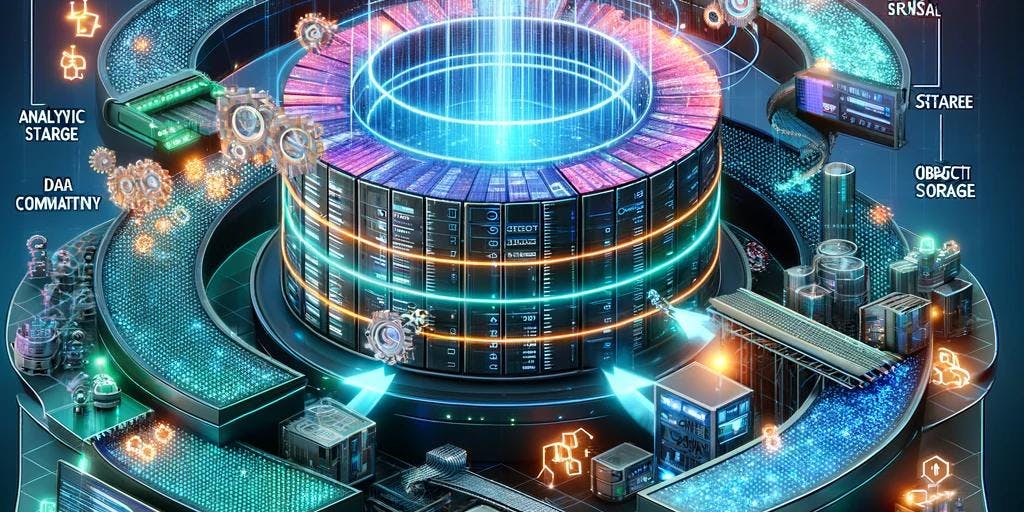Social Engineering in the Modern Age: Unveiling Hidden Threats & Harnessing Human Behavior



From outlaw to open-source: Testaments of loyalty and learning.
In today's rapidly evolving technological landscape, the most potent threats often stem not from machines, but from the people operating them. Social engineering exploits the human element, making it one of the most insidious and successful forms of cyber-attack. My name is David Cannan, and my journey from past transgressions to the forefront of cybersecurity has granted me a unique perspective on the intersection of human behavior and technology. In this whitepaper, we will delve deep into the mechanics of social engineering, explore its multifaceted techniques, and provide insights on safeguarding ourselves and our systems from these cunning attacks. As a father of triplets, I've come to appreciate the importance of vigilance, foresight, and adaptability – principles that are just as relevant in the realm of cybersecurity as they are in parenthood.
Social engineering is a fascinating and intricate domain that often targets the human psyche rather than technical vulnerabilities. As technological defenses continue to advance, exploiting the human element has become an increasingly prevalent tactic among attackers.
In the realm of cybersecurity and personal interactions, understanding and adapting to social cues is crucial. These cues play a vital role in fostering effective interpersonal relationships and, in the wrong hands, can be used maliciously.
Social engineering attacks leverage the psychology of trust, manipulation, and influence. Attackers often disguise themselves as trustworthy entities, using a mix of technological and psychological tricks to deceive their targets. Their objectives may range from financial gain to accessing sensitive information or even causing harm.
Defending against such attacks requires a multifaceted approach. Beyond technical defenses, individuals and organizations must be educated about the various tactics used in social engineering attacks. Awareness training, regular updates on new tactics, and fostering a culture of skepticism can go a long way in mitigating the risks.
In conclusion, as technological solutions continue to evolve, the human element remains a constant. Understanding the art and science of social engineering is crucial not just for cybersecurity professionals but for everyone. By staying informed and vigilant, we can better protect ourselves and our organizations from these insidious threats.
Abstraction
This white paper delves into the intricate domain of social engineering, examining its core objectives, the psychology underpinning its success, and the importance of understanding and adapting to social cues in fostering effective interpersonal relationships.
Introduction
In the realm of cybersecurity and personal interactions, social engineering stands out as a method that targets the human element rather than technical vulnerabilities. With the rising sophistication of technological defenses, exploiting human psychology has become a favored avenue for both ethical professionals and malicious adversaries.
The Primary Objective of Social Engineering
At its core, the primary goal of social engineering is to manipulate human behavior to bypass security measures and gain unauthorized access. Whether it's accessing a protected database, entering a restricted physical space, or obtaining confidential information, the techniques employed hinge on understanding and exploiting human tendencies.
The Human Facade: Wearing Masks in a Social Context
Society has, over generations, ingrained in us the practice of wearing 'masks.' From an early age, we're taught the importance of aligning our behaviors with societal expectations. Acting without regard for the perceptions and feelings of those around us often leads to social consequences, sometimes as severe as isolation.
The art of making friends, a cornerstone of human interaction, is a vivid example of this dynamic at play. Successful navigation through social spheres often requires the ability to befriend, influence, and sometimes manipulate these deeply-rooted behaviors. In essence, the very skills honed for social survival serve as the foundation for successful social engineering.
The Crucial Phase: Young Adulthood and Self-Regulation
The transition from adolescence to adulthood is punctuated by myriad social challenges and learning experiences. It's during this phase that individuals often come to terms with the intricate dance of social interaction.
Observing, understanding, and gauging people's reactions becomes a pivotal skill. Young adults learn the importance of weighing external feedback against their actions, leading to refined self-regulation. This self-awareness and adaptability are instrumental in building effective communication, forging stronger interpersonal relationships, and enhancing emotional intelligence. Moreover, these skills play a critical role in the domain of social engineering, whether for building trust or identifying vulnerabilities.
The world of social engineering is vast and complex, rooted deeply in human psychology and social dynamics. By understanding the nuances of human behavior and the masks society compels us to wear, we can better protect against social engineering threats. Equally, these insights offer a blueprint for building authentic and lasting relationships in personal and professional spheres.
Acknowledgments:
We extend our gratitude to various experts and contributors who provided invaluable insights and feedback during the drafting of this white paper.
Evolution of Personal Identity and Its Role in Social Dynamics
In the formative years of young adulthood, individuals embark on a profound journey of self-discovery. This period is marked not just by physical and emotional changes, but also by an intense exploration of personal identity and purpose. As one negotiates varied social landscapes - from academic settings to the workplace, from close-knit friendships to romantic relationships - there's a constant interplay between one's evolving identity and societal expectations.
Personal experiences, both positive and negative, shape our perceptions and responses. For instance, a young adult who has faced rejection might become more empathetic, while another who has enjoyed consistent social validation might exude more confidence. These nuances in personal experiences mold our reactions in social situations, and recognizing them is key to understanding our own strengths and vulnerabilities.
Embracing Vulnerabilities: The Strength in Acknowledgment
It's often said that our vulnerabilities make us human. In the context of social dynamics, acknowledging one's vulnerabilities isn't a sign of weakness but a testament to self-awareness. By embracing these aspects of ourselves, we not only foster genuine connections but also guard against manipulation. A social engineer, for instance, might prey on unrecognized or unacknowledged insecurities. Knowing oneself, in this sense, is both a personal strength and a defense mechanism.
Personal anecdote: During my early years as a software engineer, I often grappled with the 'Impostor Syndrome,' feeling out of place among seasoned professionals. Recognizing this vulnerability, I sought mentorship, undertook further training, and gradually built my confidence. Not only did this personal acknowledgment lead to professional growth, but it also made me more attuned to the insecurities of others, enabling genuine connections.
Authenticity and Its Role in Building Trust
In an age where digital interactions often overshadow face-to-face ones, authenticity becomes paramount. Being genuine, both in intent and action, fosters trust - a critical element in any relationship. For young adults navigating myriad social interactions, projecting an authentic self can be the difference between fleeting acquaintances and lasting friendships.
From a social engineering perspective, authenticity is a double-edged sword. While genuine individuals build trust organically, malicious actors can feign authenticity to exploit trust. Thus, while it's essential to be authentic, it's equally crucial to discern the authenticity of others.
Young adulthood is a tapestry of experiences, learnings, and personal evolution. The dynamics of social interactions during this phase not only shape personal identities but also lay the foundation for future relationships and defenses against potential manipulations. By understanding and embracing our personal journeys, we are better equipped to navigate the complex world of human interactions and the potential pitfalls of social engineering.
The Intricacies of Mastering Social Engineering
Social engineering is not a mere confluence of techniques that can be assimilated from a textbook. At its heart, it’s an art rooted in human psychology, intuition, and an astute understanding of social dynamics. Often, success in this domain may be aided by elements of luck or even physical appearance, given that first impressions play a pivotal role in human interactions.
The sooner one delves into the nuances of social engineering, the more time they have to observe, learn from, and refine their approach based on the outcomes of their interactions. However, as with any game of strategy, the players on the opposite side might be employing similar tactics. This reciprocity underscores the importance of not just influencing but also discerning attempts at influence.
The Chess Game of Social Interactions
Social engineering can be likened to a game of chess. Each move is calculated, each strategy is formulated based on the anticipated response of the opponent. But unlike chess, where the pieces and their potential moves are evident, social interactions are shrouded in layers of complexity. The person you're attempting to 'engineer' might be countering with strategies of their own, making the game multidimensional and unpredictable.
Awareness: The Compass in the Maze of Human Psyche
Awareness, in the context of social engineering, goes beyond being alert. It's about meticulously reading into people, discerning the unsaid from the said, and holding mental checkpoints. As you interact with someone, you're continuously feeding input and analyzing the output – their reactions.
By holding individuals accountable in your mental space, you track patterns in their behavior, deviations from the norm, and subtle cues that may hint at their underlying motivations or feelings. This form of mental cataloging not only aids in understanding the individual at hand but also hones one's ability to predict and influence future interactions.
Being adept at reading people correctly is half the battle. It ensures that while you're navigating the labyrinth of human interactions, you have a reliable compass, allowing you to remain a step ahead, whether in personal relationships, business negotiations, or even in warding off potential manipulators.
The Dance of Trust: A Triad of Interactions
Mastering social engineering is akin to choreographing a dance where each move is meticulously calculated, not just to sway the immediate partner but to influence the audience as a whole. This intricacy amplifies when the interaction is not just between two individuals, but involves a triad.
A Tale of Three: Anna, Ben, and Claire
To illustrate, let's delve into an illustrative narrative involving three individuals: Anna, Ben, and Claire.
Anna is a fledgling entrepreneur seeking investment for her startup. Claire is a prominent investor, known for her discerning eye and strategic investments. Ben is a mutual acquaintance, who, while not an investor himself, is a trusted associate of Claire. Anna's primary goal is to win Claire's trust and, subsequently, her investment. However, Claire is notoriously difficult to approach directly. Anna's strategy, therefore, revolves around leveraging her rapport with Ben to bridge the gap to Claire.
One day, at a networking event, Anna strikes up a conversation with Ben, discussing topics that resonate with him, from shared professional interests to hobbies. Anna doesn’t immediately bring up her entrepreneurial endeavor. Instead, she focuses on building a genuine connection, subtly showcasing her knowledge, passion, and the potential of her startup.
As weeks pass, their connection deepens. One evening, over coffee, Anna finally shares her ambitions about her startup and subtly mentions her admiration for Claire, expressing a wish to pitch to her someday. Ben, now trusting and valuing Anna's authenticity, offers to introduce her to Claire.
When the introduction finally happens, Claire is already predisposed to view Anna in a positive light due to Ben’s implicit endorsement. Anna’s task then shifts from cold-pitching to reinforcing the trust that has been preliminarily established through Ben.
This tale underscores the power of indirect influence in social engineering. By winning Ben's trust, Anna didn't just gain an introduction to Claire; she acquired an implicit endorsement, a powerful tool in the art of persuasion. It also reiterates the importance of genuine connections, awareness, and the ability to read people correctly, as each interaction becomes a stepping stone towards the ultimate goal.
Targeted Reactions in Social Engineering
Social engineering revolves around manipulating human behavior and responses for a specific objective. The most successful social engineers understand human psychology intricately and recognize which emotional triggers or reactions can be exploited. Here, we delve into various targeted reactions, elucidating how their careful manipulation is a testament to adept social engineering.
Emotional Investment
**Description:** Emotional investment refers to the degree to which an individual is engaged or committed to a particular situation or person emotionally.
**Manipulation:** A skilled social engineer will foster a sense of camaraderie or shared purpose with their target, making the latter more inclined to help, share information, or be influenced. The deeper the emotional connection, the higher the likelihood of the target acting in favor of the social engineer.
Third-party Validation
**Description:** This relies on the human tendency to trust and value the opinions of those they respect or view as authoritative.
**Manipulation:** By obtaining endorsements or introductions from trusted figures, a social engineer can swiftly gain the confidence of their target. This method bypasses the usual barriers and skepticism, as the target is already preconditioned to trust.
Reciprocity
**Description:** Rooted in the human desire to return a favor when something is received, reciprocity is a potent tool.
**Manipulation:** By offering something of perceived value, whether it's information, a favor, or a tangible gift, social engineers can create a sense of indebtedness in their target, making them more amenable to requests.
Authority and Conformity
**Description:** People are often inclined to obey authoritative figures or conform to the majority.
**Manipulation:** Social engineers might pose as persons of authority or reference a majority stance to exert influence. By leveraging this innate human tendency, they can persuade individuals to act in specific ways, often bypassing logical reasoning.
Scarcity and Urgency
**Description:** The fear of missing out or the pressure of a ticking clock can push people to act without thorough scrutiny.
**Manipulation:** By creating artificial deadlines or suggesting limited availability, a social engineer can push their target to act hastily, sidestepping usual cautionary protocols.
Confirmation Bias
**Description:** Individuals tend to search for, interpret, and remember information that confirms their pre-existing beliefs.
**Manipulation:** A social engineer can feed their target information that aligns with their existing beliefs, making it easier to persuade them. By reinforcing what the target already believes, resistance to new or contrasting information is reduced.
Conclusion:
The potency of social engineering lies in its ability to exploit human reactions and biases. Recognizing and manipulating these targeted reactions is a testament to the prowess of a skilled social engineer. While the techniques may vary, the underpinning principle remains constant: understanding human psychology to predict, influence, and achieve a desired outcome.

